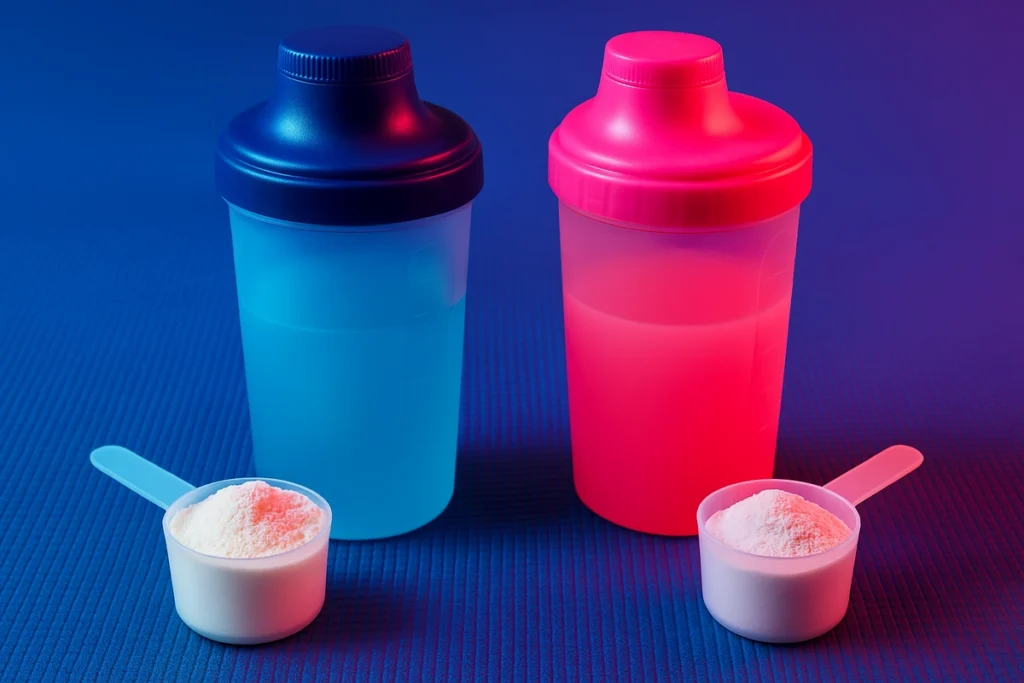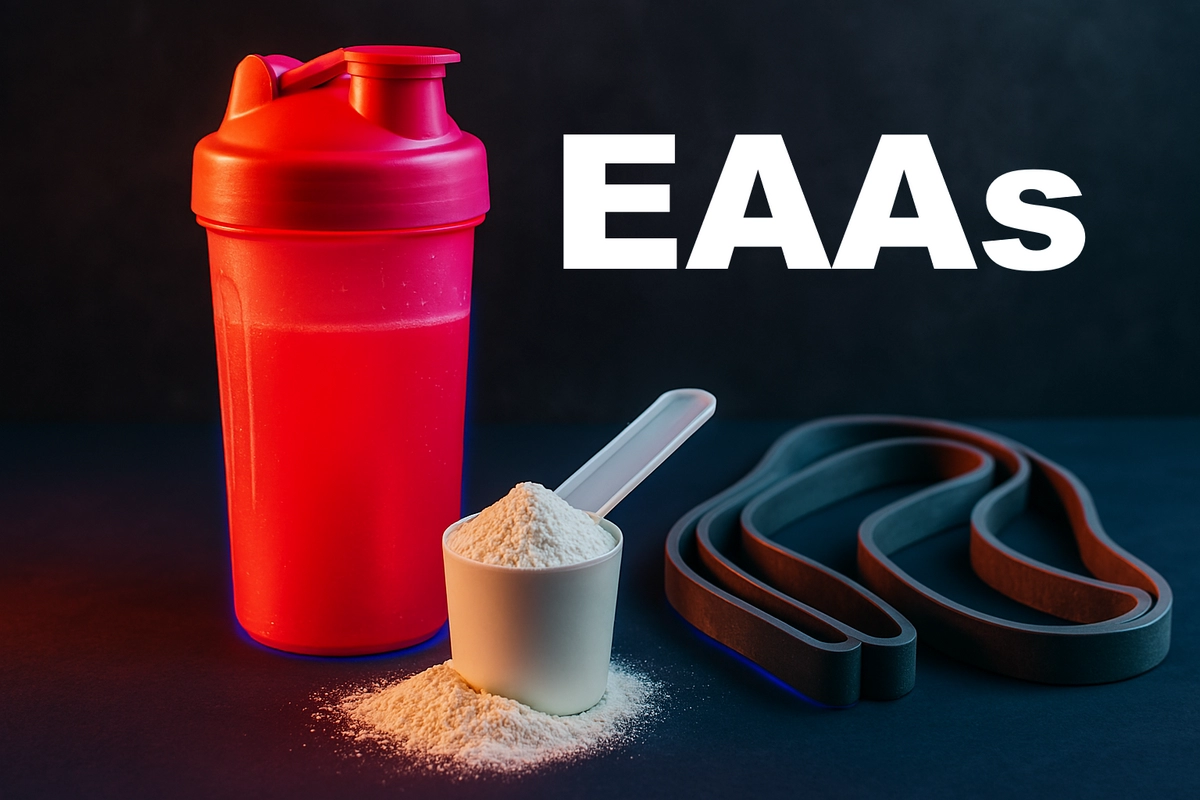If you’re serious about building muscle and recovering faster, you’ve probably heard of EAAs (Essential Amino Acids). But one question always comes up:
When’s the best time to take EAAs for muscle growth?
I’ll give it to you straight—as a fitness coach and someone who’s tested EAAs on myself and clients—the best time to take EAAs is around your workout, either before, during, or immediately after.
That’s when your muscles are most sensitive to nutrients, your amino acid levels drop fastest, and your body is primed for recovery and growth.
Let me break it down and show you how I’ve used EAAs personally and professionally to help lifters get stronger, recover faster, and protect their gains—especially during fasted training or cutting phases.
Table of contents
What Are EAAs and Why Timing Even Matters

EAAs are the nine essential amino acids your body can’t make on its own. They’re critical for:
- Muscle protein synthesis (aka building new muscle)
- Preventing muscle breakdown during intense training
- Supporting recovery, especially during a cut
Unlike BCAAs, which only give you 3 aminos, EAAs provide the full spectrum, including leucine, lysine, threonine, and others your body absolutely needs after training.
That’s why I always tell clients: Don’t waste money on BCAAs when EAAs actually do the full job.
Best Times to Take EAAs for Muscle Growth

Here’s where real-world experience matters. I’ve personally tested different timing methods—and seen dozens of client case studies. Here’s what actually works:
1. Before Workout (Pre-Workout EAAs)
If you train fasted, in the morning, or while cutting, this is my #1 recommendation.
Take this story for example:
David, a 42-year-old IT manager from Canada, came to me during Ramadan. He was training before breaking his fast, and struggling with energy and recovery. We added 8g of EAAs 15 minutes before his fasted workouts. Within one week, his strength stabilized, and his post-workout soreness dropped by half. He even said: “This is the first time I’ve felt strong while training on an empty stomach.”
Personally, I use pre-workout EAAs during my fasted cardio and lifting sessions in the early morning. It gives me just enough fuel to train hard without spiking insulin or feeling bloated.
2. During Workout (Intra-Workout EAAs)
This is what I use most often—especially during heavy or high-volume sessions.
One of my clients, Markus, a 33-year-old natural bodybuilder from Sweden, was in a cutting phase and getting crushed by fatigue. We added a simple intra-workout routine: 10g of EAAs with 1L of water, sipped throughout his workout. In 10 days, he messaged me: “Game changer. Less fatigue, better pumps, and I’m hitting my numbers again.”
I personally sip EAAs with electrolytes during leg day or full-body sessions. I feel the difference—not just in strength, but in how I recover and stay hydrated during longer workouts.
3. After Workout (Post-Workout EAAs)
If you’re not eating right after your workout, EAAs post-training can kickstart the recovery process fast.
Sara, a 29-year-old busy mom from Dubai, trained during lunch breaks and couldn’t eat until an hour later. We added 7g of EAAs post-workout, and she said: “It really helps. I don’t crash anymore, and my soreness is much lower.”
If your post-workout meal is delayed or you’re cutting calories, post-workout EAAs are your safety net.
When I Recommend EAAs (And When I Don’t)

EAAs aren’t for everyone. I only recommend them when they actually add value.
I recommend EAAs when:
- You’re training fasted
- You’re in a cutting phase
- You’re doing high-volume or high-intensity training
- You’re struggling with soreness or recovery
- Your protein intake is low (vegetarian, low appetite, busy schedule)
I don’t recommend EAAs:
- If you’re already hitting your daily protein goals
- If you eat a full meal within 30–60 mins after training
That’s real talk. Supplements should fill in gaps—not replace proper nutrition.
EAAs vs. BCAAs

A few years ago, I was using BCAAs out of habit. They tasted good, felt light, and were everywhere in gyms.
But then I did my research. I found that BCAAs alone can’t stimulate full muscle protein synthesis. They lack the other essential amino acids needed to finish the job.
Once I switched to EAAs, I noticed better recovery, fewer cravings post-workout, and less DOMS (delayed soreness). And my clients? Same results—especially those in a calorie deficit.
How I Use EAAs (and Recommend Them)

Here’s my simple daily breakdown based on real coaching experience:
Training Days
- Fasted workout? → 7–10g EAAs 15 mins before
- Heavy session? → 10g EAAs intra-workout
- No meal post-workout? → 7g EAAs immediately after training
Rest Days
- Not always needed. But if you’re in a deep calorie deficit, take 5–7g between meals to preserve muscle and reduce cravings.
🧃 My go-to? Watermelon or lemon-lime EAAs with no artificial dyes. Easy on the stomach, mixes well, and keeps hydration up.
Final Tips to Maximize Muscle Growth with EAAs
- Don’t overthink it—just time them around your workouts
- Stay consistent—you won’t feel results overnight, but it adds up
- Focus on whole food first, EAAs second
- Combine with sleep, smart training, and enough daily protein
- Choose a trusted brand with all 9 EAAs (ideally with leucine at the top)
Summary – When to Take EAAs for Muscle Growth?
Best Time = Before, During, or After Workout
Especially useful for fasted training, cutting, or when protein intake is low
As someone who’s used EAAs for years and coached clients from all backgrounds, I can tell you—they’re not magic. But when used strategically, they’re a powerful tool for recovery, performance, and muscle protection.
💬 Got a question about EAAs or want help with your supplement stack? Drop a comment. I reply to every serious question.



Leave a Reply